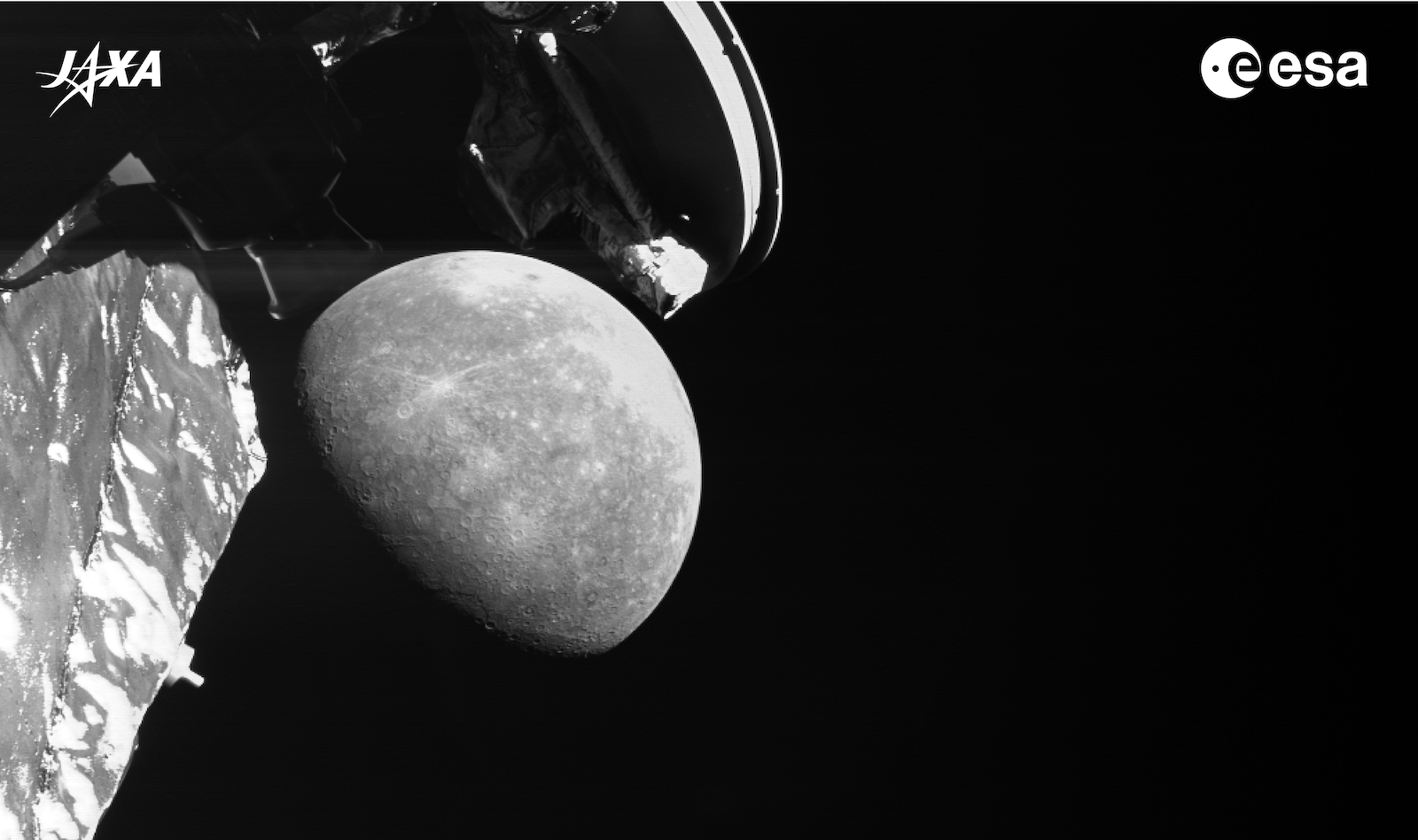On the Italian evening of 19 June 2023, the ESA/JAXA BepiColombo mission successfully completed the third of six planned flybys around Mercury. During the flyby, monitoring camera number 3 took dozens of images, black and white snapshots with a resolution of 1024 x 1024 pixels.
The closest approach occurred about 236 km from the surface, above the night side of the planet. Some features started appearing from the shadows about 12 minutes later, when BepiColombo was already about 1800 km from the surface.
The lighting has become optimal for theimaging approximately 20 minutes after closest approach, from a distance of about 3500 km from the planet. Geological features are visible in these images, including a newly named impact crater.
A new crater for Mercury
While planning the images to be taken during this flyby, the mission team realized that a large, as yet unnamed, impact crater would be visible. BepiColombo photographed it, and it was assigned the name Edna Manley in honor of the Jamaican artist of the same name (1900-1987) by the UAI Working Group for Planetary System Nomenclature.
This 218-kilometre-wide crater will be of interest to future scientists because it dug into Mercury’s surface until it found dark material, which could indicate the remains of the first carbon-rich crust of the planet. Additionally, the floor of the basin inside Manley Crater was inundated with smooth lava.
–> Pre-order now the first Astrospace Complete Guide, dedicated to telescopio Euclid.
In the future, BepiColombo will try to measure how much carbon the crater contains and what minerals are associated with it, so as to learn more about the geological history of Mercury. Below, an image taken at 21:49 Italian by the monitoring camera 3 of the Mercury Transfer Module, when the spacecraft was about 2536 km from the planet’s surface. Credits: ESA/BepiColombo/MTM
The tectonic history of Mercury
Mercury’s heavily cratered surface has a 4.6 billion-year history of asteroid and comet crashes. In the two closer images (above and on the cover) one of the most spectacular geological features of the planet can be seen near the line of the terminatorwhich separates day and night sides.
The escarpment, called Beagle Rupes, was first seen by NASA’s Messenger mission in January 2008. It is one of Mercury’s many scarps, tectonic features that likely formed as a result of the planet’s cooling and contraction, causing the its surface would become “wrinkled”. Beagle Rupes has a total length of about 600km and runs through a characteristic elongated crater called Sveinsdóttir. It also delimits a slab of crust that has been pushed westward at least 2 km above the ground.
Image taken at 19:56 Italian time on June 19, 2023 by the monitoring camera 3 of the Mercury Transfer Module, when the probe was just over 4000 km from the surface of Mercury. Credits: ESA/BepiColombo/MTM
The complexity of the topography is easily seen, thanks to the accentuated shadows near the terminator. Members of the BepiColombo imaging team are already discussing related issues influences of volcanism and tectonics that shape this region.
In addition to the images, numerous scientific instruments were turned on and made operational during the flyby. They revealed the magnetic, plasma and particle environment around the spacecraft from locations not normally accessible during an orbital mission.
When is the next flyby?
The next flyby of Mercury by BepiColombo will take place on September 5, 2024. Meanwhile, the mission will soon enter a very challenging part of its journey. Will gradually increase the use of solar electric propulsion, per constantly brake against the enormous gravitational pull of the Sun. Santa Martinez Sanmartin, ESA’s BepiColombo mission manager, said:
We are already working hard, increasing communications and command opportunities between the vehicle and ground stations, to ensure rapid turnaround between thruster outages. This will become more critical as we enter the final stages of the cruise phase, and it is essential to maintain course as accurately as possible.
BepiColombo’s Mercury Transfer Module will complete more than 15,000 hours of solar electric propulsion operations over its lifetime. Together with nine planetary flybys in total, these operations will guide the spacecraft to orbit Mercury in December 2025.
